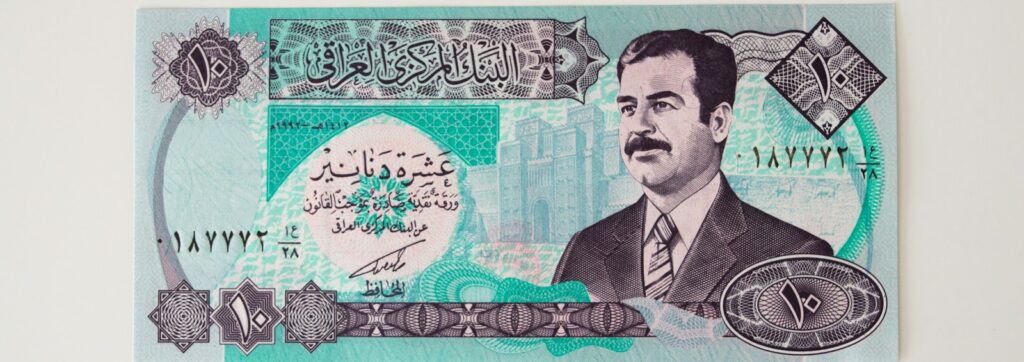From Saddam Hussein to Ayatollah Ali Khamenei, history echoes through the Iran–Israel conflict leading to probable world war 3. Explore how past rivalries may shape future tensions in this gripping geopolitical analysis.
The escalating conflict between Iran and Israel, marked by Israel’s analogy between Iran’s Supreme Leader Ayatollah Ali Khamenei and Iraq’s former leader Saddam Hussein, offers a compelling case study for UPSC aspirants seeking to understand world history and international relations.
As of June 2025, Israel’s “Operation Rising Lion” has targeted Iran’s nuclear and military infrastructure, prompting Iranian missile retaliation. This article explores the historical parallels between Saddam’s fall in 2003 and the current threats to Khamenei, analyzing their implications for geopolitics, regime stability, and regional peace.
1. Background: The Fall of Saddam Hussein (2003)
Saddam Hussein’s regime collapsed in 2003 following a U.S.-led invasion, justified by claims of weapons of mass destruction (WMDs). The invasion, while initially successful, led to severe instability in Iraq, characterized by sectarian violence, insurgencies, and the rise of extremist groups like ISIS. The Iraq War, costing over 100,000 Iraqi lives and billions in economic damage, serves as a cautionary tale about the unintended consequences of regime change without robust post-conflict planning.
Saddam’s invasion of Iran in 1980, driven by fears of Iran’s Islamic Revolution spreading to Iraq’s Shia majority, provides additional historical context. The Iran-Iraq War (1980–1988) resulted in massive casualties (200,000–262,000 Iranians, 105,000–200,000 Iraqis) and economic devastation ($1.2 trillion total), highlighting the risks of regional conflicts escalating beyond initial objectives (Wikipedia – Iran-Iraq War).
Aspect | Details |
|---|---|
War Duration | 8 years (1980–1988) |
Iraqi Casualties | 105,000–200,000 killed |
Iranian Casualties | 200,000–262,000 killed |
Economic Cost | $1.2 trillion total |

2. Current Israeli Threats: Ayatollah ali khamenei and Saddam Hussein Analogy
Israel’s “Operation Rising Lion,” launched on June 13, 2025, has targeted Iran’s nuclear sites, military installations, and leadership, with Defence Minister Israel Katz warning Khamenei of a fate akin to Saddam Hussein’s. This analogy serves as a strategic signal of Israel’s intent to neutralize Iran’s nuclear ambitions and regional influence, while also aiming to undermine Iranian morale.
Recent developments include:
Israeli airstrikes on Tehran, damaging nuclear and missile facilities (AP News).
Iran’s retaliation with ballistic missiles and drones, targeting Tel Aviv and Haifa, causing over 20 deaths (Al Jazeera).
The conflict’s sixth day, with regional airspaces closed and fears of broader escalation (CNN).
Israel’s strategy echoes its 1967 Six-Day War tactics, which Saddam himself modeled during his 1980 invasion of Iran (National Defense University). However, the analogy raises questions about whether targeting Khamenei could lead to instability similar to post-Saddam Iraq.
3. Internal Dynamics in Iran: Stability and Vulnerability
Iran’s political system revolves around Khamenei’s supreme authority, supported by the Islamic Revolutionary Guard Corps (IRGC). However, the conflict has exposed vulnerabilities:
Economic Strain: Sanctions and airstrike damages have worsened Iran’s economic crisis, fueling public discontent.
Opposition Voices: The Iranian diaspora, including the Pahlavi opposition, has intensified calls for regime change.
IRGC Loyalty: The IRGC’s loyalty to Khamenei ensures short-term stability, but prolonged conflict could strain this allegiance.
Saddam’s regime similarly relied on a loyal military, but internal dissent and external pressures eroded its stability. Iran’s centralized structure and regional influence through proxies like Hezbollah and the Houthis make it distinct, yet the risk of internal fragmentation remains if the conflict persists.
4. Strategic and Military Considerations in Iran–Israel Conflict
Israel’s air supremacy has degraded Iran’s missile and nuclear capabilities, raising doubts about Tehran’s ability to sustain a prolonged conflict (Understanding War). Iran’s response options include:
Missile and drone attacks, as seen in recent strikes on Israel.
Cyber warfare to disrupt Israeli infrastructure.
Activating proxy militias, such as Hezbollah or the Houthis, who have already launched missiles at Israel (NPR).
International reactions are divided:
The U.S. supports Israel, with President Trump calling for Iran’s “unconditional surrender” (Reuters).
European nations caution against regime collapse, fearing regional chaos (Reuters).
Russia and China advocate de-escalation, reflecting their strategic interests.
The Iran-Iraq War offers a parallel: Saddam’s Iraq received extensive international support, while Iran was relatively isolated. Today, Iran’s isolation is more pronounced, with limited allies willing to intervene directly.
5. Historical Lessons on Regime Change: Regional Implications
Past regime changes in the Middle East highlight the risks of targeting leadership:
Iraq (2003): Saddam’s removal led to a power vacuum, sectarian violence, and ISIS’s rise.
Libya (2011): Gaddafi’s fall resulted in state collapse and ongoing civil war.
Syria (2011–present): Attempts to oust Assad caused a humanitarian crisis and extremist growth.
A collapse of Khamenei’s regime could trigger similar outcomes, amplified by Iran’s regional influence. Ethnic and sectarian tensions, combined with proxy networks, could destabilize Iraq, Syria, and Lebanon, creating a broader crisis.
Case Study | Outcome | Key Consequences |
|---|---|---|
Iraq (2003) | Regime collapse | Sectarian violence, ISIS emergence |
Libya (2011) | State failure | Civil war, terrorism proliferation |
Syria (2011–present) | Protracted conflict | Humanitarian crisis, extremism |
6. UPSC Perspective: Critical Analysis and Way Forward
For UPSC aspirants, this conflict offers insights into key international relations themes:
International Law: The legality of preemptive strikes under the UN Charter
Geopolitical Strategies: Containment versus regime change as approaches to rogue states.
Regional Dynamics: The role of non-state actors like Hezbollah in conflicts.
Global Diplomacy: Divergent responses from major powers and their implications.
The Khamenei-Saddam analogy underscores the debate between strategic realism (neutralizing threats) and idealism (promoting regime change). The Iraq experience suggests containment may be less destabilizing than intervention, but Israel’s security concerns drive its aggressive stance. Aspirants should analyze these trade-offs critically.
Conclusion: Realism vs. Idealism in International Politics
The Khamenei-Saddam analogy encapsulates the tension between strategic realism and idealistic interventions. While Israel’s actions aim to curb Iran’s nuclear threat, the risk of repeating Iraq’s post-2003 chaos looms large.
For UPSC aspirants, this conflict highlights the importance of historical context, power dynamics, and the consequences of military interventions. By studying these parallels, students can gain a deeper understanding of world history and contemporary geopolitics.